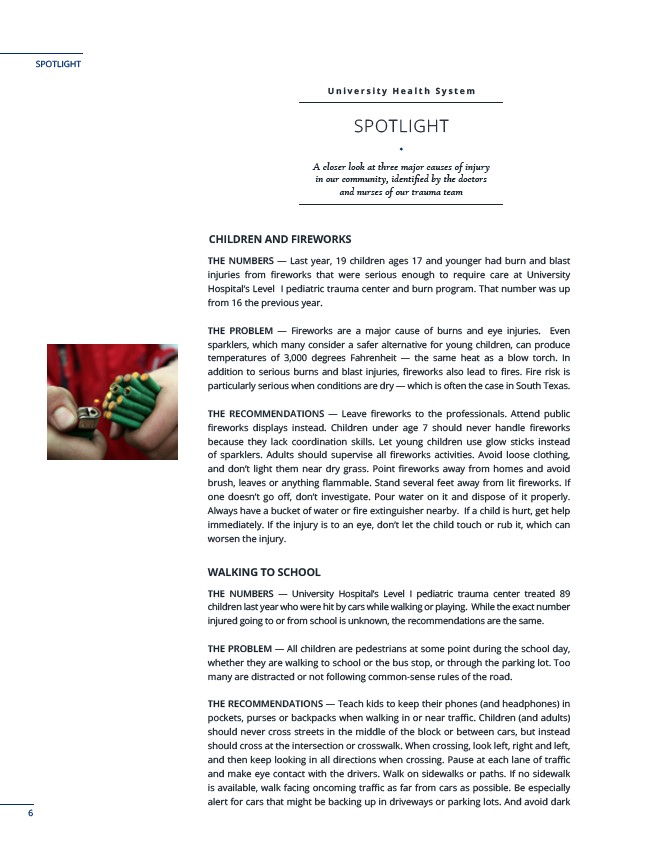
CHILDREN AND FIREWORKS
THE NUMBERS — Last year, 19 children ages 17 and younger had burn and blast
injuries from fireworks that were serious enough to require care at University
Hospital’s Level I pediatric trauma center and burn program. That number was up
from 16 the previous year.
THE PROBLEM — Fireworks are a major cause of burns and eye injuries. Even
sparklers, which many consider a safer alternative for young children, can produce temperatures of 3,000 degrees Fahrenheit — the same heat as a blow torch. In addition to serious burns and blast injuries, fireworks also lead to fires. Fire risk is particularly serious when conditions are dry — which is often the case in South Texas.
THE RECOMMENDATIONS — Leave fireworks to the professionals. Attend public fireworks displays instead. Children under age 7 should never handle fireworks because they lack coordination skills. Let young children use glow sticks instead of sparklers. Adults should supervise all fireworks activities. Avoid loose clothing, and don’t light them near dry grass. Point fireworks away from homes and avoid brush, leaves or anything flammable. Stand several feet away from lit fireworks. If one doesn’t go off, don’t investigate. Pour water on it and dispose of it properly. Always have a bucket of water or fire extinguisher nearby. If a child is hurt, get help immediately. If the injury is to an eye, don’t let the child touch or rub it, which can worsen the injury.
WALKING TO SCHOOL
THE NUMBERS — University Hospital’s Level I pediatric trauma center treated 89 children last year who were hit by cars while walking or playing. While the exact number injured going to or from school is unknown, the recommendations are the same.
THE PROBLEM — All children are pedestrians at some point during the school day, whether they are walking to school or the bus stop, or through the parking lot. Too many are distracted or not following common-sense rules of the road.
THE RECOMMENDATIONS — Teach kids to keep their phones (and headphones) in pockets, purses or backpacks when walking in or near traffic. Children (and adults) should never cross streets in the middle of the block or between cars, but instead should cross at the intersection or crosswalk. When crossing, look left, right and left, and then keep looking in all directions when crossing. Pause at each lane of traffic and make eye contact with the drivers. Walk on sidewalks or paths. If no sidewalk is available, walk facing oncoming traffic as far from cars as possible. Be especially alert for cars that might be backing up in driveways or parking lots. And avoid dark